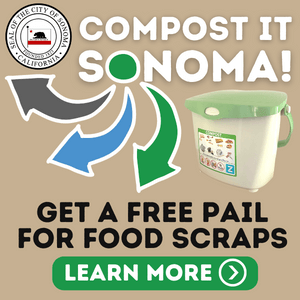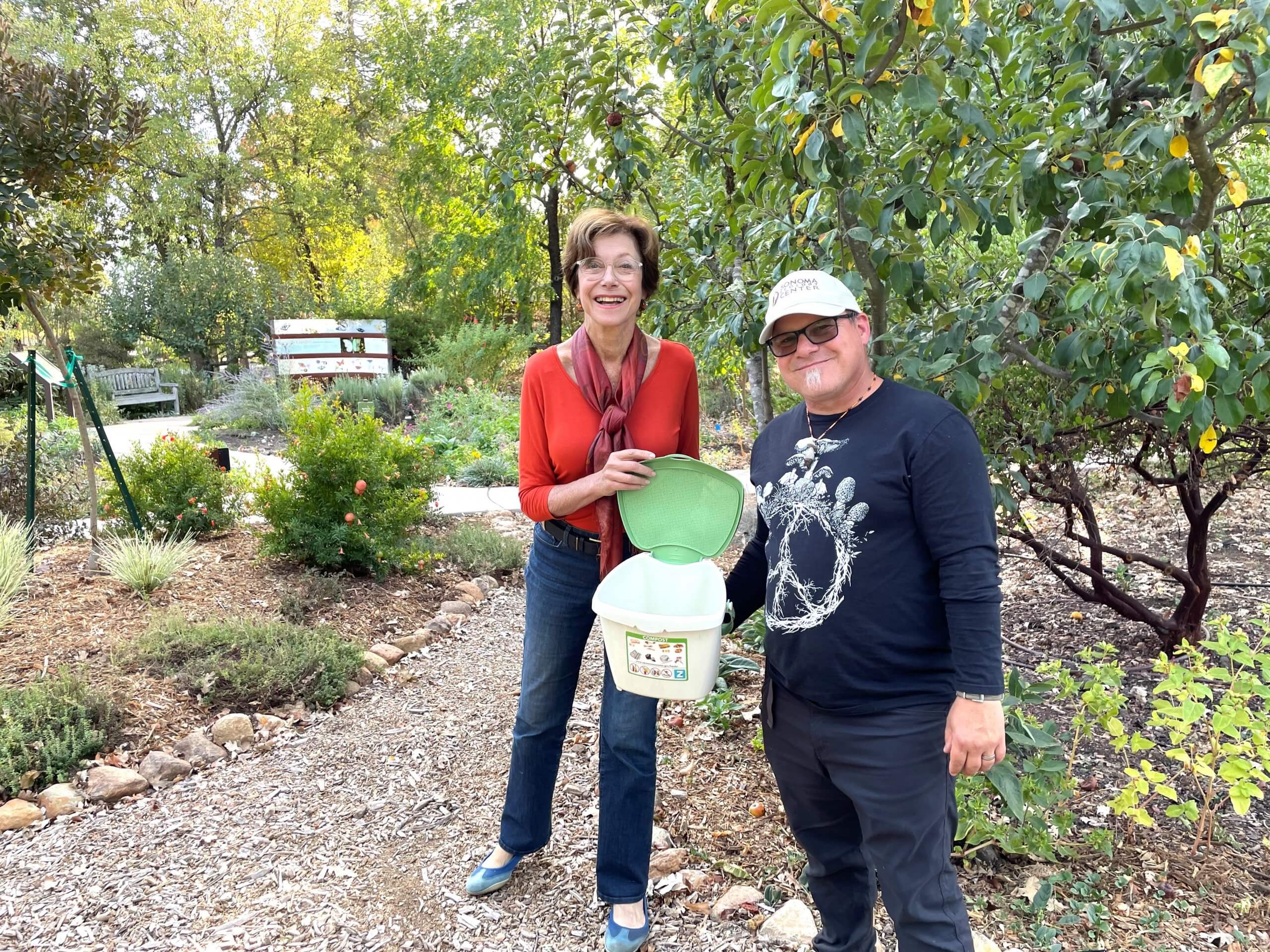By Travis Wagner —
The short answer is that we are doing fairly well. From January through October 2022, the recycling rate of Sonoma residents was 28 percent by weight. The organics collection/composting rate was 42 percent. This means Sonoma residents diverted 70 percent of their trash away from landfills. These diverted materials are either recycled or composted, and then reused.
For each person in the city, we disposed of just over one pound per person per day. Bravo! There is, however, a greater need for improvement for Sonoma’s commercial sector, which includes businesses, apartment buildings, and condo complexes. This sector is currently diverting only 30 percent from landfills. The City will be focusing additional education and outreach efforts to the commercial sector in the new year.
Over the past month, the Compost It Sonoma! program has been giving away free kitchen pails to help residents compost food scraps. As of November 28, more than 1,200 pails had been given away through our partners: Sonoma Garbage Collectors, Refill Madness Sonoma, Sonoma Garden Park, and also at Sonoma’s City Hall.
As Sonomans improve each month on proper segregation of food scraps and organics (they go in the same green cart as your yard waste) we further increase the diversion rate. This is important because landfilled organics generate methane, a powerful greenhouse gas. Instead, we can compost these materials to help improve our soil and capture carbon. And the less waste we landfill means a longer life for Sonoma County’s Central Landfill facility.
While the city has been focusing on the proper segregation and collection of food scraps, an even better approach is to reduce the creation of food waste from the start.
If you haven’t yet received your free, food scrap kitchen pail, and to learn more about composting, visit sonomacity.org/compost-it-sonoma.
— Travis Wagner is the Sustainability Coordinator for the City of Sonoma.
Tips for cutting down on food waste
As we enter the long holiday season where food is a focus, there are many easy steps to avoid food waste.
- Right-size your portions.
- Stick to your shopping list: avoid impulse buying and shopping while hungry.
- Buy only what you can consume in a reasonable period.
- Don’t rely exclusively on the “best buy” dates: these dates are manufacturers’ determinations. For dairy, fish, and meat, trust your eyes and nose.
- Consume leftovers quickly; reuse them in stocks, soups, stews, casseroles, pasta toppings, and curries.
- Use your freezer: if you do not plan on eating your leftovers right away, freeze them.
- Be smart about bulk sales, especially of perishable fruits and vegetables.







Be First to Comment